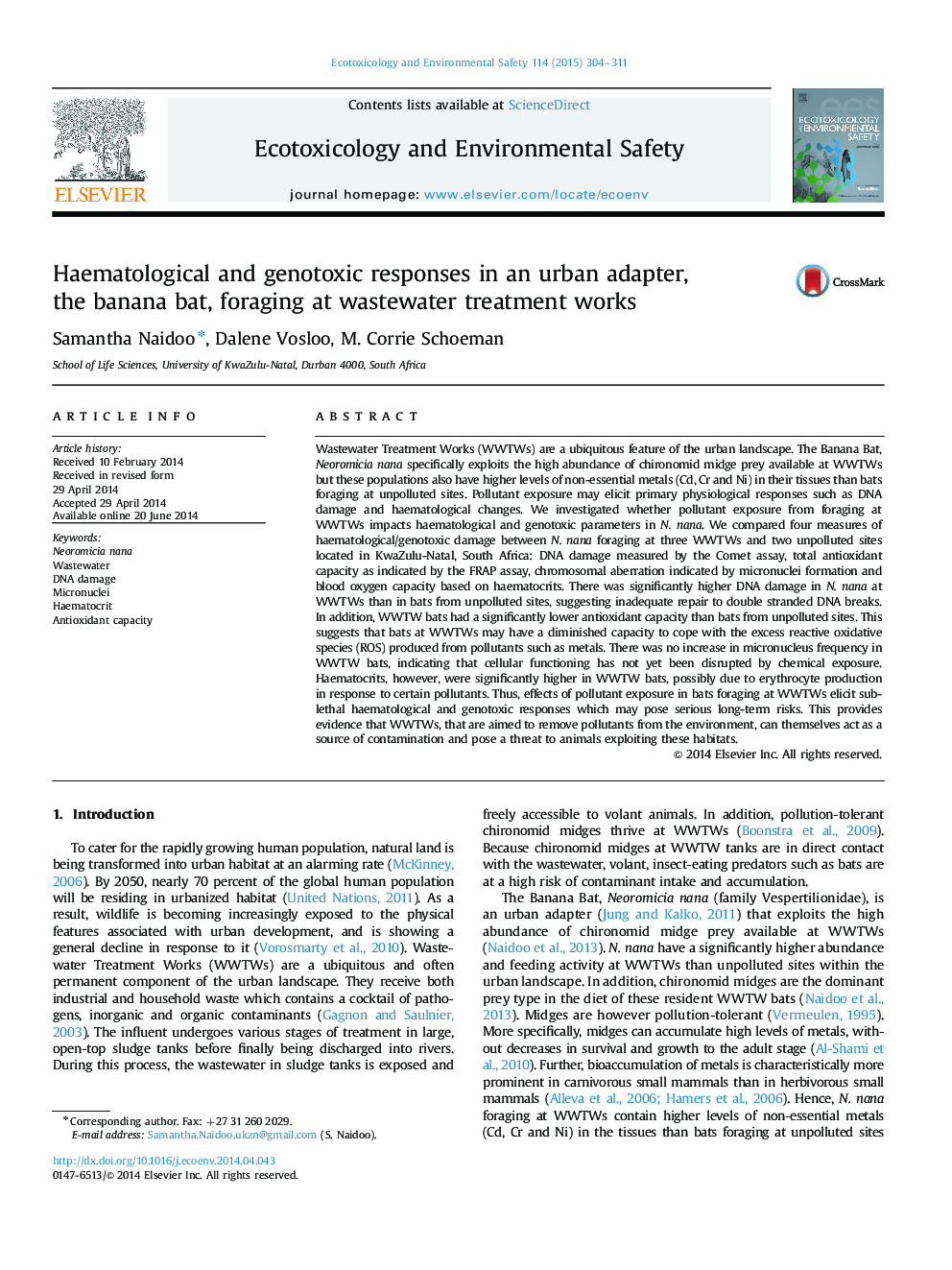| کد مقاله | کد نشریه | سال انتشار | مقاله انگلیسی | نسخه تمام متن |
|---|---|---|---|---|
| 4419826 | 1618949 | 2015 | 8 صفحه PDF | دانلود رایگان |
• We measure haematological and genotoxic responses in Banana Bats at wastewater treatment works.
• Pollutant-exposed bats have significantly higher DNA damage and diminished antioxidant capacity.
• Haematocrits in pollutant-exposed bats are significantly higher than those from unpolluted sites.
• These physiological responses indicate long-term risks of disease and epigenetic changes.
Wastewater Treatment Works (WWTWs) are a ubiquitous feature of the urban landscape. The Banana Bat, Neoromicia nana specifically exploits the high abundance of chironomid midge prey available at WWTWs but these populations also have higher levels of non-essential metals (Cd, Cr and Ni) in their tissues than bats foraging at unpolluted sites. Pollutant exposure may elicit primary physiological responses such as DNA damage and haematological changes. We investigated whether pollutant exposure from foraging at WWTWs impacts haematological and genotoxic parameters in N. nana. We compared four measures of haematological/genotoxic damage between N. nana foraging at three WWTWs and two unpolluted sites located in KwaZulu-Natal, South Africa: DNA damage measured by the Comet assay, total antioxidant capacity as indicated by the FRAP assay, chromosomal aberration indicated by micronuclei formation and blood oxygen capacity based on haematocrits. There was significantly higher DNA damage in N. nana at WWTWs than in bats from unpolluted sites, suggesting inadequate repair to double stranded DNA breaks. In addition, WWTW bats had a significantly lower antioxidant capacity than bats from unpolluted sites. This suggests that bats at WWTWs may have a diminished capacity to cope with the excess reactive oxidative species (ROS) produced from pollutants such as metals. There was no increase in micronucleus frequency in WWTW bats, indicating that cellular functioning has not yet been disrupted by chemical exposure. Haematocrits, however, were significantly higher in WWTW bats, possibly due to erythrocyte production in response to certain pollutants. Thus, effects of pollutant exposure in bats foraging at WWTWs elicit sub-lethal haematological and genotoxic responses which may pose serious long-term risks. This provides evidence that WWTWs, that are aimed to remove pollutants from the environment, can themselves act as a source of contamination and pose a threat to animals exploiting these habitats.
Journal: Ecotoxicology and Environmental Safety - Volume 114, April 2015, Pages 304–311
